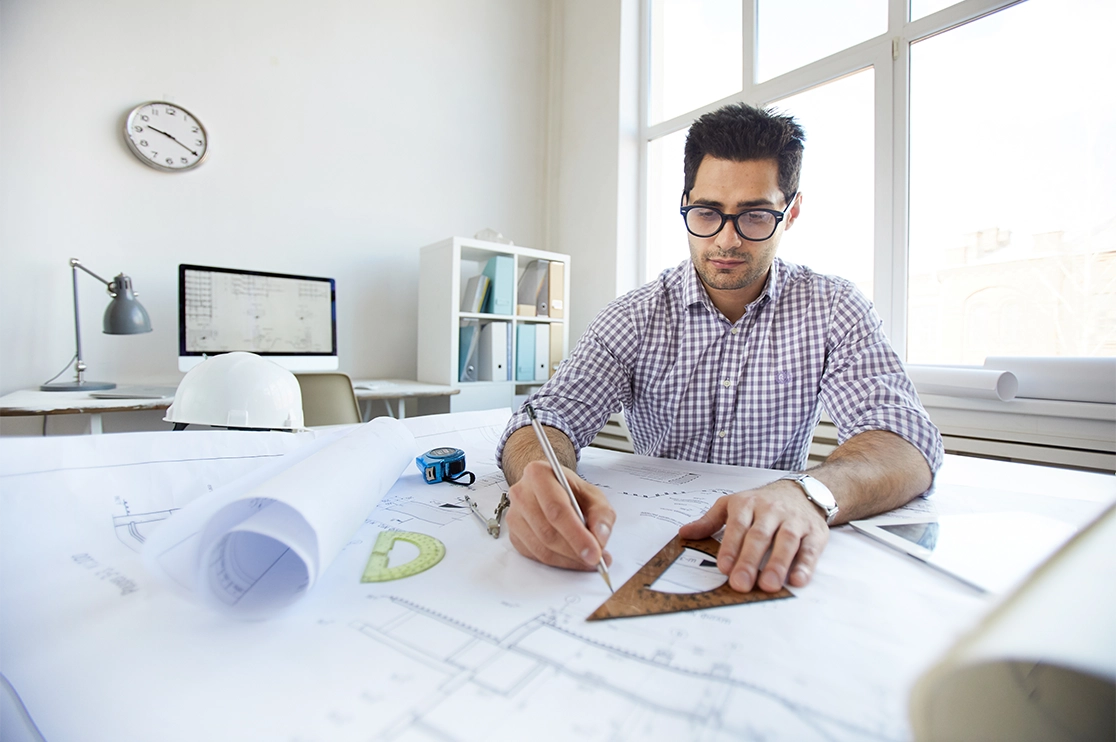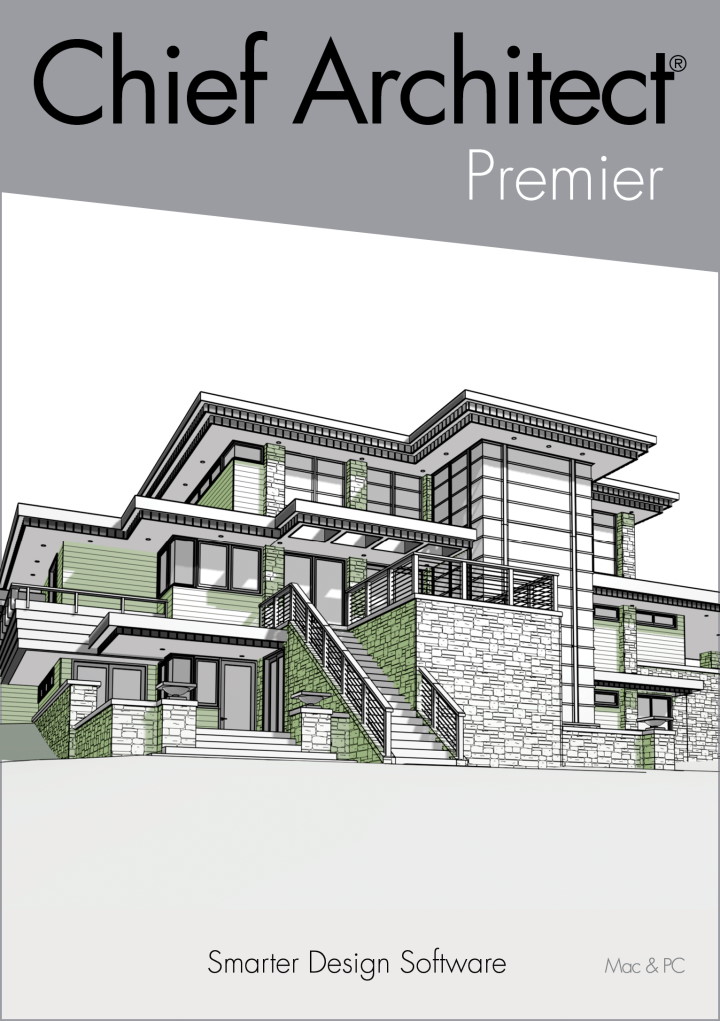Architect Tips for Designing Current Residential Spaces
Architect Tips for Designing Current Residential Spaces
Blog Article
Understanding the Diverse Occupation Paths Available for Aspiring Architect
As an ambitious Architect, you have a world of occupation paths awaiting you. Each course provides one-of-a-kind difficulties and possibilities to apply your creativity and technological know-how. Whether you're attracted to traditional style or the nuances of lasting design, there's a niche that straightens with your interests. Recognizing these diverse alternatives can shape your expert trip, however which instructions will you choose to check out initially?
Traditional Style: Creating Structures and structures
Traditional architecture focuses on developing buildings and structures that mix functionality with aesthetic appeal. Your designs can reflect social heritage, showcasing neighborhood traditions while fulfilling modern requirements.
You'll develop skills in drafting, model-making, and site analysis, allowing you to imagine and communicate your ideas efficiently. Involving with clients, you'll need to comprehend their vision and equate it into viable layouts.
Furthermore, constructing codes and sustainability techniques are crucial in your job, guaranteeing your frameworks are secure and environmentally friendly. As you grow in your career, you'll locate chances in household, business, and even repair jobs, each offering distinct challenges. Welcoming typical style leads the way for a meeting occupation that pays homage to the past while shaping the future.
Urban Preparation: Shaping Communities and Public Spaces
As an ambitious Architect, you can play an important role as a city planner, changing exactly how areas connect and work. By using community involvement methods, you'll guarantee that citizens have a voice in shaping their setting. And also, integrating sustainable layout principles will certainly aid develop rooms that not just meet today's requirements however additionally safeguard the future.
Duty of Urban Planners
While numerous may believe of engineers as the single enthusiasts behind structures, metropolitan coordinators play a crucial duty in forming the wider landscape of neighborhoods and public areas. By working together with different stakeholders, you'll assist make parks, transportation systems, and residential locations that advertise social communication and availability. Your expertise in spatial style and community dynamics allows you to envision future development while preserving social heritage.
Area Interaction Methods
Reliable neighborhood engagement approaches are essential for urban planners to assure that the voices of homeowners are heard and valued in the planning process. To foster purposeful discussion, you ought to prioritize open discussion forums and workshops where area participants can reveal their concepts and worries. Usage studies and social media sites to get to a wider audience, guaranteeing diverse viewpoints are included. Collaborating with regional organizations can improve count on and promote deeper links. It is necessary to provide clear information about suggested jobs and decision-making procedures, permitting locals to really feel informed and empowered. By actively paying attention and incorporating feedback, you'll create rooms that mirror the community's requirements, eventually bring about more sustainable and successful metropolitan settings. Embrace transparency and constant discussion for long lasting effect.
Sustainable Design Principles
When developing city spaces, incorporating sustainable design concepts is vital for developing settings that grow both environmentally and socially. You need to start by concentrating on power effectiveness, utilizing materials that decrease waste and promote recycling. Consider incorporating green rooms, like parks and yards, to improve biodiversity and improve air quality. Advertising walkability and public transportation can lessen reliance on cars and trucks, promoting a healthier community.
Designing with water preservation in mind is likewise key-- think of rainfall gardens and absorptive surfaces to take care of stormwater. Including community members during the preparation process warranties that the areas you develop meet their demands and encourage social interaction. By accepting these principles, you'll add to vivid, sustainable city landscapes that profit everybody.

Landscape Design: Developing Lasting Outside Environments
As you discover landscape design, you'll find necessary style principles that develop practical and beautiful exterior areas. Sustainable techniques play a crucial role in ensuring these environments prosper while lessening environmental influence. Plus, you'll find a selection of occupation possibilities that allow you to make a real difference in exactly how people engage with nature.
Design Concepts in Landscape
Recognizing layout principles in landscape style is crucial for producing lasting outside settings that harmonize with nature. You'll require to ponder elements like scale, proportion, and balance to guarantee your styles feel natural and inviting. Including native plants not only boosts biodiversity however additionally decreases water use, making your landscape durable. Believe regarding the flow of space and just how individuals interact with it; paths and seating areas should invite exploration and leisure. Additionally, take note of seasonal changes, creating with products that match the environments year-round (Architect). By focusing on sustainability and looks, you can create outdoor areas that enrich the area and advertise wellness. Accepting these concepts will establish a strong structure for your job in landscape architecture.
Lasting Practices Summary
Lasting practices in landscape style not just focus on visual appeals but additionally focus on eco-friendly wellness and source conservation. By integrating indigenous plants, you improve biodiversity and minimize the requirement for chemical fertilizers and chemicals. Executing effective irrigation systems helps preserve water and lessens overflow, protecting close-by communities. You can create areas that promote dirt health and wellness, such website as making use of natural materials and exercising permaculture principles. In addition, integrating eco-friendly infrastructure, like rainfall gardens and permeable pavements, help in stormwater administration and decreases metropolitan warm. You contribute to a much healthier planet and supply spaces that cultivate neighborhood link when you create outside environments with sustainability in mind. Inevitably, these methods ensure your layouts benefit both individuals and the setting for several years to find.
Occupation Opportunities Expedition
With a strong foundation in sustainable practices, landscape design supplies a variety of occupation paths that permit you to make a significant effect on the environment. You can function as a landscape developer, developing aesthetically pleasing and functional outdoor spaces, or focus on eco-friendly restoration, helping to revive damaged ecological communities. Urban planners typically work together with landscape engineers to produce environment-friendly spaces in metropolitan setups, improving city livability. If you're passionate about education, consider ending up being a landscape style educator, inspiring future generations. Furthermore, you might collaborate with nonprofits concentrated on environmental sustainability or engage in research to introduce brand-new practices. Each path not only forms beautiful settings yet likewise promotes a healthier planet for future generations.
Lasting Layout: Concentrating on Eco-Friendly Practices
As you explore your occupation in style, embracing environmentally friendly techniques can set you apart in an affordable field. Lasting layout concentrates on creating structures that minimize ecological impact while improving occupant well-being. By including sustainable materials, energy-efficient systems, and lasting structure methods, you'll add to a greener future.
Begin by gaining understanding of green qualifications Architect like LEED or BREEAM, which can boost your credentials. Consider just how natural light, air flow, and thermal performance can enhance layout. Collaborate with engineers and environmental professionals to innovate remedies that minimize waste and preserve resources.
Don't fail to remember the value of community involvement-- appealing neighborhood stakeholders can inspire designs that balance with the setting. As clients increasingly focus on sustainability, your knowledge in environmentally friendly practices will certainly not just attract projects but likewise satisfy your interest for liable style. Embrace this essential element of the occupation, and enjoy your job flourish.
Historic Conservation: Protecting and Restoring Social Heritage
While you commence on your building journey, think about the necessary function of historical conservation in maintaining our social heritage. This area concentrates on the defense and repair of significant buildings, sites, and structures that tell the tales of our past. By involving in historical conservation, you'll aid guard the building tradition that shapes community identity.
As a historic preservation Architect, you'll evaluate historical value and analyze the problem of structures. You'll function closely with guardians and historians to assure authentic reconstruction methods are used. This occupation course permits you to blend imagination with study, enabling you to design services that appreciate original materials and workmanship.
Your work not just contributes to sustainability by reusing existing structures however additionally promotes a feeling of pride within neighborhoods. Welcoming this course will certainly assist you come to be a guardian of history, maintaining the tales and looks that enrich our lives.
Inside Design: Enhancing Indoor Spaces
Historic preservation and interior architecture both share a dedication to enhancing the developed setting, yet they concentrate on different elements. While historic preservation highlights maintaining a framework's historic and cultural value, interior architecture absolutely nos in on optimizing indoor rooms for functionality and looks.
As an aspiring Architect, you'll discover that indoor architecture enables you to mix imagination with technological abilities. You'll create rooms that not just look good but likewise advertise convenience and efficiency. This area entails understanding just how light, color, and materials engage within an area, impacting mood and use.
You'll deal with various tasks, from domestic homes to industrial workplaces, making certain that each setting fulfills the demands of its occupants. By focusing on customer experience, you can change insides right into practical and inspiring spaces, making a considerable effect on exactly how people connect with their surroundings. Welcome the possibility to boost interior settings and shape the way people live and work.
Industrial Design: Merging Functionality With Appearances
Commercial layout plays a crucial duty in developing products that perfectly mix appearances with capability, making sure that what you utilize daily is not just aesthetically enticing however likewise functional. As a hopeful Architect, you can involve yourself in this field, concentrating on making whatever from furniture to customer electronics. Your job involves comprehending user requirements, materials, and manufacturing processes, enabling you to create ingenious options that boost daily experiences.
In industrial layout, you'll often team up with manufacturers, online marketers, and engineers, making sure that your styles are not just stunning however likewise practical. This profession path provides a dynamic setting where creativity fulfills usefulness, making it a fulfilling selection for designers interested in shaping the products of tomorrow.
Often Asked Concerns
What Educational Accreditations Do I Need to Become an Architect?
To come to be an engineer, you'll need a professional level in style, normally a Bachelor's or Master's. Furthermore, you'll have to finish a teaching fellowship and pass the Architect Registration Exam to exercise lawfully.
Are There Accreditation Requirements for Various Architectural Career Paths?
Yes, there're qualification demands for various architectural courses. Architect. You'll need to pass exams, full internships, and occasionally go after specialized training, depending on your chosen emphasis, like landscape architecture, city style, or historical preservation
What Software Abilities Are Vital for Architects Today?

How Can I Gain Practical Experience While Researching Design?
You can acquire practical experience by interning at building firms, participating in layout competitions, volunteering for area projects, or teaming up with schoolmates on real-world jobs. These chances enhance your abilities and develop valuable links in the sector.
What Work Opportunities Exist Outside Typical Design Firms?
You can explore different work chances outside standard architecture companies, like urban preparation, interior style, landscape style, building administration, real estate advancement, or also roles in sustainability consulting. Each deals unique difficulties and incentives.
Whether you're attracted to traditional design or the subtleties of sustainable style, there's a niche that lines up with your passions.When designing city rooms, incorporating lasting layout concepts is important for developing environments that prosper both environmentally and socially.As you explore landscape style, you'll uncover crucial design principles that produce useful and attractive outdoor areas.Recognizing layout concepts in landscape style is important for producing sustainable outside atmospheres read more that integrate with nature.In industrial style, you'll commonly team up with designers, marketing professionals, and suppliers, making sure that your styles are not just attractive however likewise practical.
Report this page